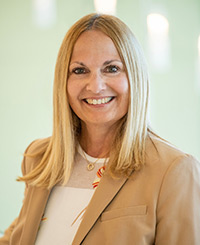Life is for learning. And even the most challenging events offer opportunities to learn. In fact, they probably offer the greatest opportunities to learn.
So it has been with the coronavirus pandemic. Even in the midst of this difficult time in our history, Stony Brook Medicine has learned much about who we are, and who we serve.
During Black History Month in February, it seems especially appropriate and fitting that our outreach to the community at large has extended well beyond our four walls, in a renewed reminder of our core mission to serve all our constituencies effectively and equitably.
As you know, Stony Brook doesn’t just serve those who come to the hospital in need. We are now in more than 230 outpatient locations across Suffolk County. And as a non-profit, state-owned enterprise, we care for everyone, without discrimination as to race, color, religion, sex, gender identity, national origin, disability, sexual orientation, age or source of payment.
But our public mission doesn’t end there. We reach out to underserved communities with programs such as Stony Brook HOME, the free student-run clinic in East Patchogue, and the HOPE (Health Occupations Partnership for Excellence) program, which provides exposure to healthcare career options for underrepresented students in the Brentwood, Wyandanch and Longwood high schools. We are also participating in a new collaborative through Press Ganey that helps us review the patient experience through a health equity lens. Called the Press Ganey Equity Partnership, it will help hospitals across the country foster a more holistic approach to patient care by coordinating diversity, equity and inclusion efforts with our patient experience initiatives.
The latest example of our community outreach is occurring now through the establishment of “pop-up” COVID-19 vaccination sites throughout Suffolk County. After helping open the state-run mass vaccination site on the Stony Brook University campus in January, the State turned to Stony Brook University Hospital to assist in successfully developing PODs (Point of Dispensing sites) as pop-up sites in underserved communities on Long Island to reach communities of color and the elderly, in locations as diverse as Hempstead, Wyandanch, Long Beach, Valley Stream and East Hampton.
In the process, we are helping to educate communities of color about the importance of getting the COVID-19 vaccine. Which is also an educational opportunity for ourselves.
Historically, African-Americans, Native Americans and Hispanic/Latino populations have been leery of vaccines. And with good historical reason. Most notable is the infamous 1932 U.S. study of syphilis, in which hundreds of Black men were never told they were human subjects in a study designed to withhold treatment. Originally planned for six months, the “Tuskegee Study” went on for 40 years – long after penicillin became available as the prevailing treatment. In exchange for unknowingly taking part in the study, those men received free medical exams, free meals and burial insurance.
Little wonder, then, that African Americans, Native Americans and Hispanics/Latinos have among the lowest rates of flu vaccination: just 26 percent among Native Americans and 36-38 percent for African-American and Hispanic/Latino populations, compared to Caucasians at approximately 50 percent. Because of government involvement in public vaccine programs, distrust still runs deep. Some fear that the vaccine may contain computer chips to track their whereabouts.
These lingering perceptions are opportunities for us all to learn that these fears and barriers are real. And as healthcare providers in a public healthcare system, we are challenged and required to work to build trust in that system.
It is especially notable these efforts are happening now, during Black History Month, which carries the national theme of “The Black Family: Representation, Identity, and Diversity.” Solutions to such intractable healthcare problems will require creativity on our part, respect for personal opinions, and reflection upon the failures of the past, so that together we can be successful in meeting the diverse healthcare needs of the communities we serve.
Carol




Strong message; thank you!